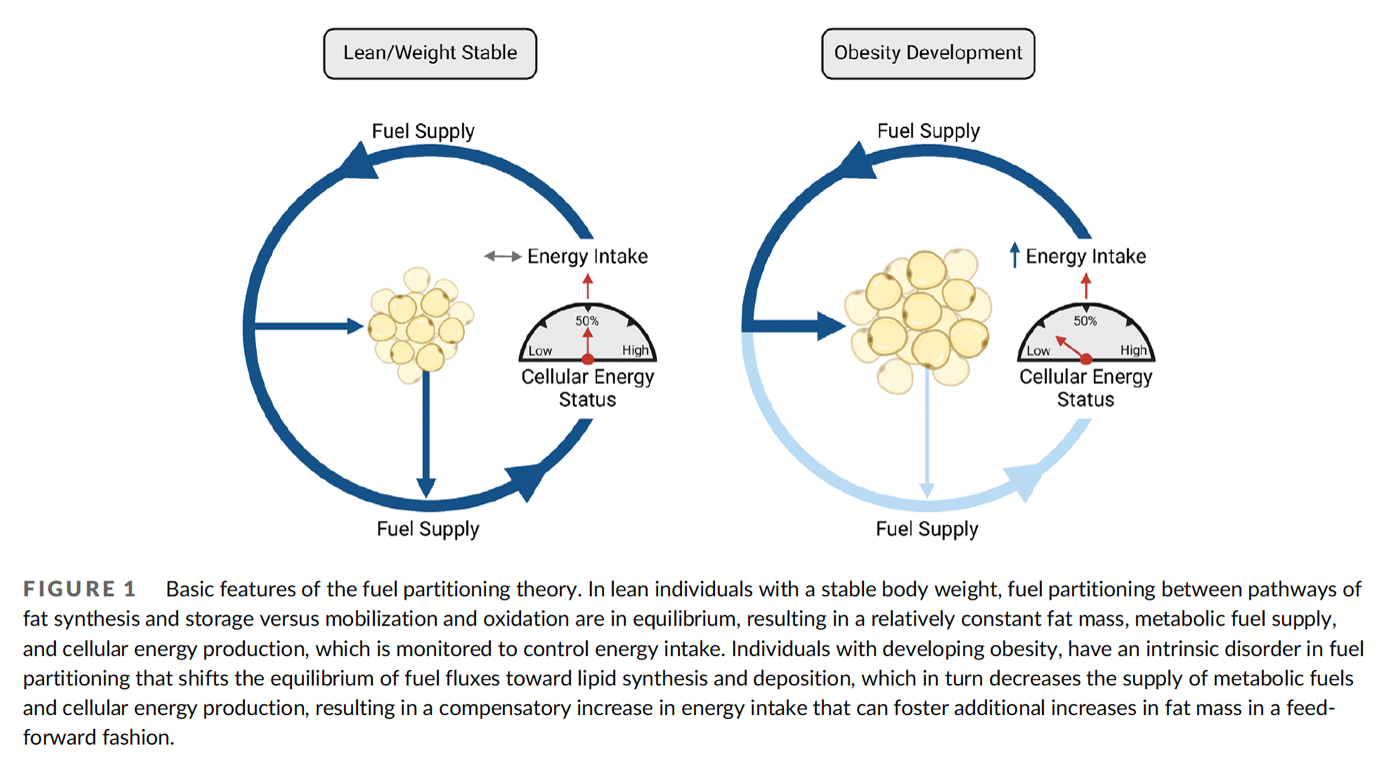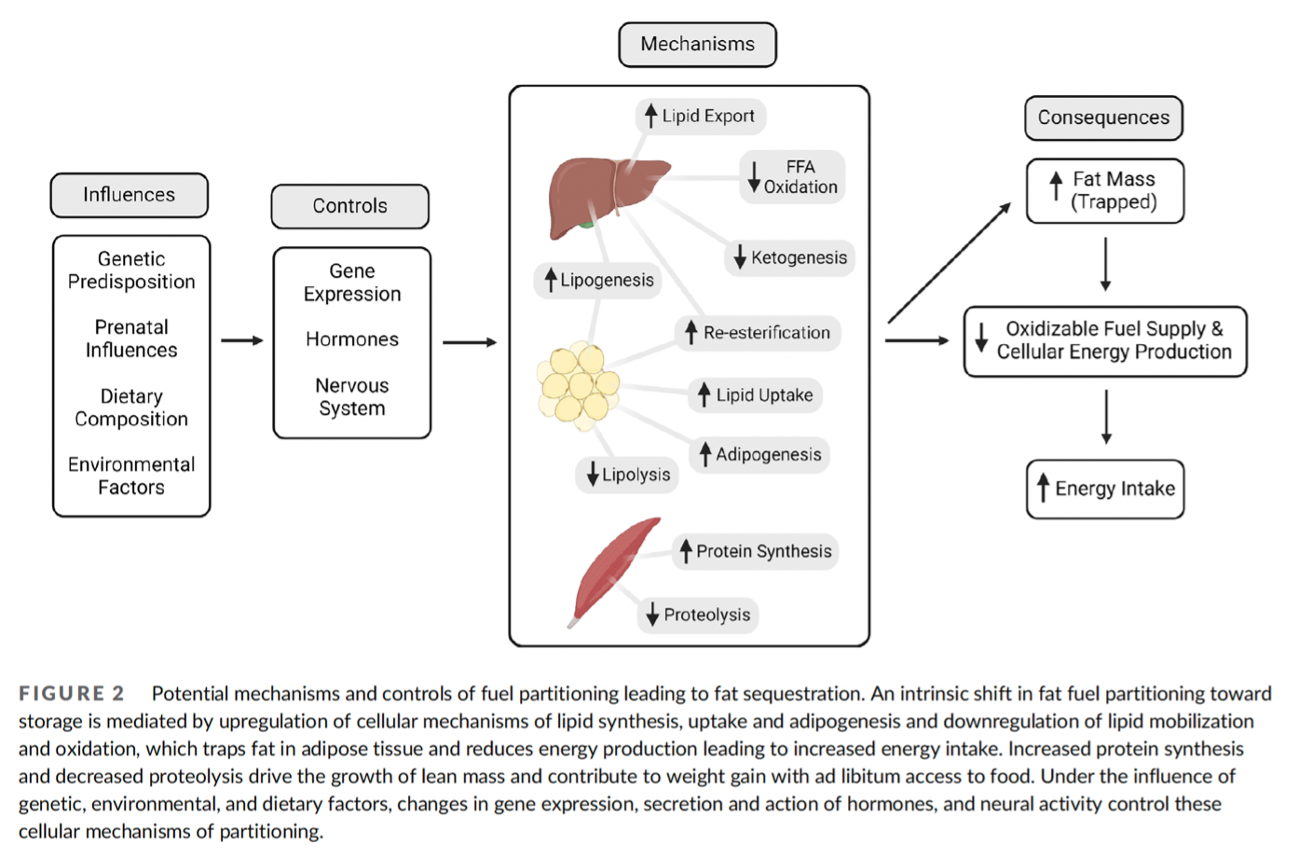Date:5 September 2024
Content Sections
- ● The top line
- ● Normal vs abnormal fuel partitioning
- ● But how do you release trapped fat?
- ● Summing up and slimming down
By Meleni Aldridge, executive coordinator
You’ve been pummelling yourself in the gym and cutting down what you’re eating. And those spare tyres just won’t budge! Your fat feels ‘trapped’ and refuses to be lost. Is this something you can relate to?
Well, me too, which is why a recent paper published in July in Obesity Reviews, titled “Trapped fat: Obesity pathogenesis as an intrinsic disorder in metabolic fuel partitioning” caught my attention. As someone who’s suffered the trials and tribulations of having a wayward body that always seems to do the opposite of what physiology determines it should, I was keen to delve into this new theory.
In a nutshell, the paper explores why people become obese, beyond the obvious (eating loads, moving little), and sheds light on how it can all go wrong when our bodies partition (use) the fuel we ingest in specific ways leading to what the authors call ‘obesity pathogenesis’—essentially the process of how obesity becomes a disorder or a disease. As such, it also gives good insight into why some people are lean and can’t put on weight easily and others are heavy and struggle to lose it no matter what they do, or how little they eat.
Let me try and distil the main points simply.
The top line
Despite a century of research, conventional science appears no further forward in understanding the physiological minutiae (pathophysiology) of obesity. Yet the developed world continues to get ever fatter, feeding the spiralling chronic disease epidemic like dry paper on a fire. I’m not being ‘fatist’. You only need to look around you to see that it’s our reality. So much so, that it’s not uncommon to see obese mannequins in shops, notably in countries, like the US, suffering the most severe obesity ‘epidemics’.
Conventional medical thinking continues to be stuck on the ‘calories in/calories out’ concept, suggesting that the real problem is that we’re eating too much and being too sedentary. It sounds incredibly plausible, but it’s nowhere near the full story.
Obesity research keeps revealing the complexity of the problem to us . Contributing factors include food addiction linked to specific sugar/fat/salt combinations, changes in the nutritional profile of modern diets, especially those loaded with processed and ultra-processed food, high tech/new-to-nature foods, frequency and timing of eating, environmental chemicals, effects of stress, lack of outdoor activity, under-stimulation of our endocannibinoid system, and other factors.
Evolutionary biology informs how we’re built for famine not for feast, with a genetic make-up that is programmed to crave high calorie foods and a built-in drive to gorge when we find them. It was all about surviving the lean times to ensure the species continued. Yet our genetic make-up has allowed Big Food to cash in after discovering the ‘bliss point’ when fat and sugar meld with just the right amount of salt. Think of the smell of fresh donuts. Whether you like donuts or not, your body will no doubt notice the distinctive aroma at 50 paces.
Another question begging for an answer is what happens when our bodies are no longer able to balance out a genetic make-up at odds with our food choices, our food addictions, our lifestyle and activity levels? We know that our metabolism becomes disturbed, we lose metabolic flexibility and if left untended, we then descend into disorder, dysfunction and disease.
Thankfully, this recent trapped fat paper identifies how some people, no matter how little they eat, or how active they are, experience a situation where their bodies are unable to access the stored (trapped?) fat to make energy. This sets up a cycle of constant craving for more fuel/food. Worse still are those whose obese bodies actually make less energy despite having sufficient fuel to burn, creating a vicious cycle of a constant need for food—mainly the sweet and fatty foods that hit that bliss point.
The stuck cycle that people in this position are in has been evident for some time, but explanations have been elusive until now, making this paper so timely.
Normal vs abnormal fuel partitioning
Our bodies need energy to function, which comes primarily from the food we eat (photons from sunlight can also provide us with some energy). Different components in our food, notably carbohydrates, fats, and proteins, act as energy carriers and through digestion we can extract chemical energy in the form of ATP (adenosine triphosphate). How our body then uses these energy carriers is often referred to as ‘fuel partitioning’.
In a healthy person, the body balances how it uses these energy carriers or fuels. For example, carbohydrates can be used for quick energy and excess fat stored for later use—essentially our long-range fuel tank. However, the paper suggests that in obese individuals, there’s a problem with this process. In obesity and persistent overweight, fat can get ‘trapped’, when the body doesn’t—or can’t—use it efficiently to release energy. So, even though an obese person might have a densely packed long-range fuel tank (subcutaneous adipose tissue or fat layer beneath the skin), their body can’t easily access it when needed.

Source: Friedman MI, Sørensen TIA, Taubes G, Lund J, Ludwig DS. Trapped fat: Obesity pathogenesis as an intrinsic disorder in metabolic fuel partitioning. Obes Rev. 2024 Oct;25(10):e13795.
Clinicians and many obesity sufferers have known this for a long time: it’s way more complex than just an imbalance between energy input and output. That’s why it’s so refreshing to see a paper suggesting that weight gain and obesity isn’t just about eating too much and exercising too little—the ‘calories in, calories out theory’.
The authors suggest there’s something else that’s a much bigger driver going on. They propose getting fat is more often than not an intrinsic disorder linked to how the body handles energy. This disorder affects how the body partitions fuel, leading to the accumulation of fat. Their views are supported by 80 years of animal obesity research, allowing them to update the fuel partitioning theory. They show that in obese animals, energy is redirected from being burned to being stored as fat, even when their energy intake is the same or less than that of lean animals.
The body is constantly making decisions on whether the fuels you eat are used immediately for energy, stored for future use, or converted into other forms. This process is influenced by various factors, including hormonal signals (like insulin and oestrogen, leptin and ghrelin), the availability of nutrients, and the body’s current energy needs.
In a healthy metabolism, the body efficiently balances the use and storage of these fuels. For example, after eating, insulin levels rise, promoting the storage of excess glucose as glycogen and fat. During fasting or exercise, stored glycogen and fat are mobilised to provide energy. When it all goes wrong, the authors suggest that there is a fundamental problem in the body’s decision-making process. This intrinsic disorder in fuel partitioning means the body is more likely to store fuels (particularly fats) rather than use them for energy. This leads to the accumulation of fat stores and difficulty in mobilising these stores when energy is needed.
The result is a serious energy imbalance where the body’s trapped fat stores are unable to be accessed, leading to a continuous cycle of fat accumulation. Dysfunctional partitioning is proposed as a fundamental cause of obesity, beyond simple lifestyle factors.

Source: Friedman MI, Sørensen TIA, Taubes G, Lund J, Ludwig DS. Trapped fat: Obesity pathogenesis as an intrinsic disorder in metabolic fuel partitioning. Obes Rev. 2024 Oct;25(10):e13795.
But how do you release trapped fat?
A letter in Nature last year from a massive group of some 80 scientists, looked at 100-years’ worth of data to determine that people’s basal metabolic rates (BMR) have been plunging over the last 30-years. BMR refers to the rate of energy expenditure at rest before digestion or being physically active. It has great bearing on leanness and is very sensitive to nutrition and lifestyle choices, stress, sleep deprivation and chemical exposures. Also, the lack of dietary co-factors in food choices that enhance and allow the body’s nutrient-sensing systems to work, processed and ultra processed foods, as well as environmental chemicals. Outdoor activity which triggers the endocannabinoid system, hormones and the hypothalamic, pituitary, adrenal (HPA) axis is in very short supply for too many. Poorly understood, or prioritised, is that outdoor activity is anti-inflammatory as against indoor exercise which has the opposite effect. We, as a species, are not well adapted to running on treadmills watching TV screens indoors!
This finding well and truly sinks the conventional view that obesity is an imbalance between calorie expenditure and intake. It’s far more about the complex of factors that are changing the way our genes (epigenetic) express that is not in any way how nature intended. All the new magic bullets like the ‘skinny’ semaglutide jabs are never going to work in the long run, but will make the problem way worse. They are already inducing major changes to brain health and increasing suicide ideation.
The answer lies in speaking to our genes in the evolutionary language they understand through diet, lifestyle, activity, stress management and maintaining an optimal circadian rhythm. Far from being overwhelming, it’s been the most freeing, effective and health regenerating action I’ve ever taken. It’s been 13 years since I returned to a more evolutionary-rational norm and I’ve never looked back. I have lifted myself out of the bottom of the autoimmune ravine, lost a lot of excess weight, have an abundance of energy and vitality, am clear of mind, at peace, resilient and metabolically flexible. Nothing will induce me to go back to where I was.
You’ll find more information about how I changed my health in our book, RESET EATING and below are couple more videos to dive into to better understand how important your own ‘Ecological Terrain’ is.
Hacking your lifespan via your Ecological Terrain Part One
Hacking your lifespan via your Ecological Terrain Part Two
Summing up and slimming down
The inherent drive toward fat storage is a hormonally-driven biological process in which the body converts and stores excess energy as fat. It’s primarily regulated by hormones like insulin, leptin, GLP-1, cortisol, growth hormone, androgens and oestrogen, and without it our species would not have made it so far. This intricate process has seen us through evolution because it’s so good at ensuring that energy is available for future needs. But in our modern world, it can lead to increased body fat when the fuel partitioning system fails to work as intended. Understanding this evolutionary interplay with modern life explains why people’s metabolic health is deranged, dysfunctional and lacking in flexibility and resilience. The steps to turn it all around lie in recreating a more evolutionary-rational norm with food, movement, sleep and creating a cleaner environment around us.
These are all within our control and now require us to change our behaviour and lifestyles to adapt to the modern world, full of new foods, different lifestyles, chronic stress and an abundance of hormone-altering environmental chemicals to which we’re exposed daily.
Resolving obesity is never going to come from a jab that affects one hormone, like Wegovy or Ozempic. Nor will It come from telling people to exercise more, especially if that exercise doesn’t involve outdoor activity that triggers our ancestral endocannabinoid system.
Multi-factorial natural health that resets metabolism is what it’s all about. And that’s what our book RESET EATING is all about. Based on the feedback we’ve been getting, it’s not a bad starting point for a complex problem.
The rewards far outweigh any challenges inherent in change.
>>> If you’re not already signed up for the ANH International weekly newsletter, sign up for free now using the SUBSCRIBE button at the top of our website – or better still – become a Pathfinder member and join the ANH-Intl tribe to enjoy benefits unique to our members.
>> Feel free to republish – just follow our Alliance for Natural Health International Re-publishing Guidelines
>>> Return to ANH International homepage

